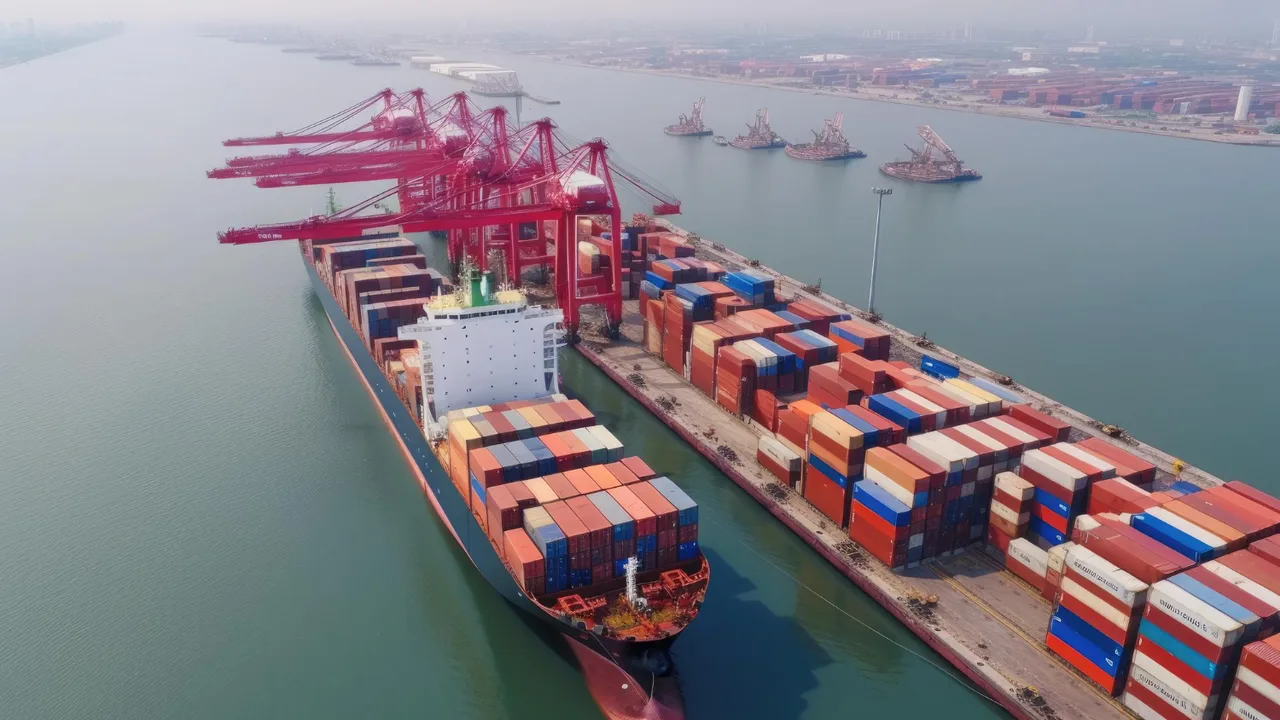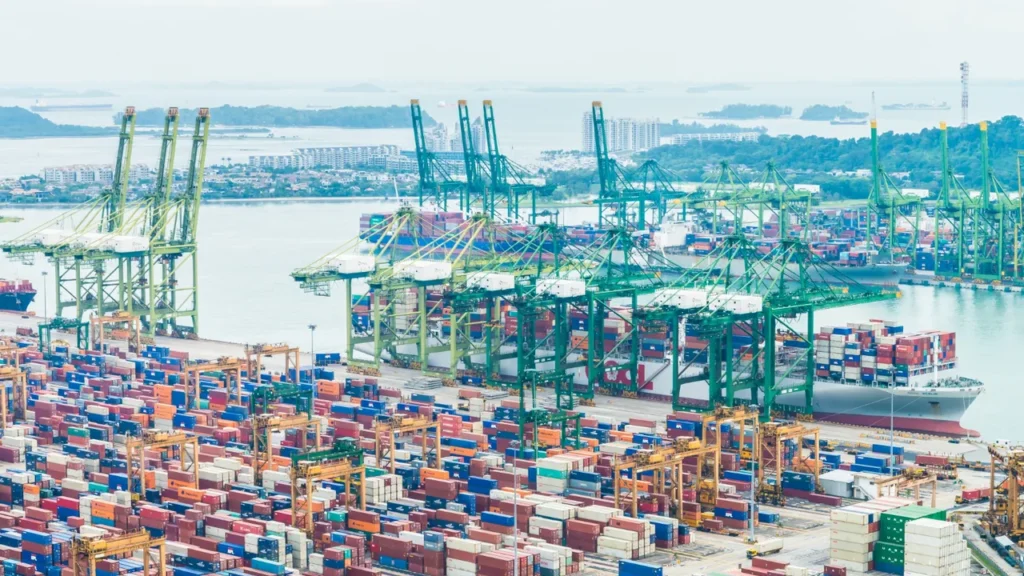BEIJING, November 6, 2025 — China’s export growth eased sharply in October, marking a turning point after months of accelerated shipments designed to stay ahead of U.S. tariffs. According to a Reuters poll of economists, the world’s second-largest economy is now experiencing a China export slowdown as front-loading activities subside and global demand softens.
October Data: From Surge to Slowdown
After a surprising 8.3% surge in September exports, October data are expected to reveal a more modest 3.0% year-on-year increase in outbound shipments. The sharp contrast reflects both a high base effect from 2024 and the gradual exhaustion of earlier front-loaded orders. Analysts note that many exporters rushed goods out of China during mid-year in anticipation of new tariffs from the U.S., particularly following renewed trade tensions between Beijing and Washington.
The moderation, while expected, highlights a critical phase for the Chinese export sector. The global market appears to be recalibrating after a year of volatility triggered by shifting trade policies, fluctuating commodity prices, and slowing Western demand. The China export slowdown also comes as policymakers weigh new fiscal and monetary tools to protect growth in the final quarter of 2025.
Trade Relations: Trump-Xi Meeting Offers a Brief Respite
Last week’s meeting between President Donald Trump and President Xi Jinping in South Korea provided temporary relief to global markets. The encounter signaled a willingness to resume trade negotiations, calming investors who feared another round of tariff escalation. For months, businesses across Asia and North America have operated under uncertainty, unsure whether supply chain disruptions would deepen.
Economists say that the agreement between the two leaders marks a tentative step toward restoring business confidence. Both nations pledged to roll back select tariffs and revisit earlier trade restrictions. “While it’s not a full-scale resolution, it’s an encouraging start,” said a Hong Kong-based trade analyst. “The key question is how long this truce will last.”
Background on the Trade Conflict
The U.S.–China trade war has reshaped global commerce since its onset in 2018. Before tensions escalated, the U.S. imported over $400 billion of Chinese goods annually. Many of these sales—ranging from electronics to consumer goods—have been difficult to replace despite Beijing’s efforts to expand into new markets such as Africa, Latin America, and the Middle East. Analysts estimate that the loss of U.S. demand has reduced China’s annual export growth by about 2 percentage points, equivalent to 0.3% of national GDP.
Manufacturing and Export Trends

October’s manufacturing activity painted a mixed picture. While production remained steady, new export orders declined sharply as overseas buyers paused orders amid tariff uncertainty. According to the official Purchasing Managers’ Index (PMI), the export order sub-index fell to its lowest level in six months.
Factories in major export hubs such as Shenzhen, Guangzhou, and Wuxi reported a noticeable drop in new contracts, particularly from North America. Several manufacturers said they are adjusting their strategies—exploring local markets or diversifying supply lines through Southeast Asia—to minimize reliance on Western buyers.
Imports Reflect Domestic Economic Headwinds
Imports also slowed, expanding by just 3.2% in October compared with 7.4% in September. The decline reflects continued weakness in domestic consumption as China grapples with a prolonged property downturn and subdued labor market. Despite repeated government promises to stimulate spending, households remain cautious.
“The Chinese consumer is still on the defensive,” said an economist at Peking University. “Uncertainty about employment and property values has led to a rise in savings rates, limiting import demand.”
Factors Affecting Import Performance
| Key Factor | Impact on Imports |
|---|---|
| Weak property market | Reduced demand for construction materials and home furnishings |
| High youth unemployment | Lower consumer spending on electronics and luxury goods |
| Global price fluctuations | Unstable commodity import costs |
| Currency strength | Higher costs for Chinese exporters but cheaper imports in some sectors |
Economic Forecasts: Split Among Analysts
Financial institutions offered varying predictions for October’s export performance, underscoring uncertainty over the near-term outlook:
- DBS Bank: 8.8% growth, citing strong electronics shipments.
- Barclays and Deutsche Bank: 5.0% growth expectations.
- Citigroup and Morgan Stanley: 3.5% forecast aligned with the median poll.
- Standard Chartered: 0% growth, reflecting the risk of stagnation.
These forecasts highlight a shared sentiment: the China export slowdown may persist through early 2026 unless trade relations stabilize and global demand rebounds.
New Measures Following Trump–Xi Agreement
During their South Korea meeting, both nations announced steps to de-escalate trade friction. Among the measures agreed upon were:
- China will suspend rare earth export restrictions for one year, providing relief to U.S. manufacturers dependent on these materials.
- The U.S. will temporarily pause its expanded Commerce Department blacklist, allowing select Chinese tech firms to access critical components.
- Beijing committed to increase purchases of U.S. agricultural products, including soybeans, and to cooperate on fentanyl control efforts.
These actions suggest cautious progress toward a longer-term trade framework, though skepticism remains high. Market analysts warn that both sides could easily reverse course if political or economic tensions resurface.
China’s Trade Surplus Narrows Slightly
China’s trade surplus is expected to reach $95.6 billion in October, up from $90.45 billion in September but below the year-to-date monthly average of $113 billion. The smaller surplus aligns with the broader theme of a China export slowdown, as export momentum fades and import growth weakens.
Exporters in industries like machinery, textiles, and automotive parts continue to perform moderately well, but other sectors—especially consumer electronics—have seen a noticeable dip in overseas demand. Despite the slowdown, China remains a dominant player in global manufacturing, supported by its efficient logistics infrastructure and expansive production capacity.
Impact on Global Supply Chains
The slowdown in Chinese exports has ripple effects across the global supply chain. Southeast Asian countries such as Vietnam and Indonesia have benefited from some production shifts, but the overall decline in Chinese exports still influences freight costs, raw material prices, and factory utilization rates worldwide.
Policy Responses and Economic Stimulus
Beijing is expected to announce additional stimulus measures if export growth continues to weaken. Economists predict potential tax incentives for manufacturers, interest rate adjustments, and logistics subsidies to help exporters maintain competitiveness. The government has also emphasized high-tech production and value-added exports as a long-term strategy to offset reliance on low-cost manufacturing.
“The export slowdown presents an opportunity for structural reform,” said a researcher from the Chinese Academy of International Trade. “China can no longer rely solely on volume; innovation and quality will drive the next phase of trade growth.”
Future Outlook
Looking ahead, the outlook for China’s trade performance remains cautiously optimistic. If current negotiations continue and tariff relief persists, exports may stabilize by mid-2026. However, any setback in U.S.–China talks could reverse recent progress.
Global demand remains uneven, with Europe facing sluggish growth and the U.S. showing mixed economic signals. Meanwhile, emerging markets are increasingly important to Chinese exporters as they seek to diversify risk and reduce exposure to Western economies.
Conclusion: Strategic Patience Needed
The China export slowdown in October 2025 underscores both the challenges and opportunities facing the nation’s economy. As external pressures ease temporarily, Beijing has a window to strengthen its industrial competitiveness and domestic consumption base. The balance between sustaining exports and stimulating internal demand will define China’s growth trajectory going into 2026.
For global markets, China’s ability to navigate this period of moderation without significant disruption will remain a key factor influencing global trade stability. While uncertainty lingers, one thing is clear: China’s role in the world economy remains pivotal—and its next policy moves will be closely watched.
Key Takeaways
- China’s exports expected to rise 3.0% in October, signaling slowdown from September’s surge.
- Imports rose 3.2%, reflecting domestic challenges in property and labor markets.
- Trump–Xi talks led to partial tariff relief and resumed trade dialogue.
- Trade surplus reached $95.6 billion, below the 2025 monthly average.
- Beijing expected to introduce new stimulus measures to stabilize exports.
Source: Reuters, November 2025 — Adapted and optimized for SEO publication.



